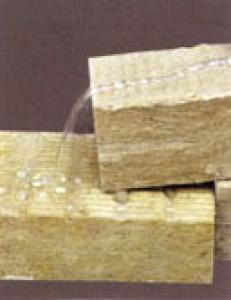Rock wool, a versatile material known for its incredible insulation properties and sound absorption capabilities, has become a staple in the construction industry. But have you ever wondered how this fascinating product is made? Let’s dive into the world of rock wool production and explore the process behind creating this remarkable material.
The Origins of Rock Wool
Rock wool’s journey begins with its raw materials. It’s primarily composed of volcanic rock, specifically basalt or andesite, and other natural materials such as furnace slag, which are abundant and sustainable. These materials are chosen for their unique properties that contribute to rock wool’s effectiveness as an insulator.
The Melting Process
The first step in the production process is melting the raw materials. This is done in a high-temperature furnace, where the volcanic rock is heated to temperatures exceeding 1000 degrees Celsius. The intense heat causes the rock to melt, forming a molten mixture that is the foundation of rock wool.
Adding Binding Agents
Once the rock has melted, binding agents are added to the mixture. These agents help to bind the fibers together, ensuring the final product has the necessary strength and durability. The type and amount of binding agents used can vary depending on the specific application of the rock wool.
The Fiberization Process
Next comes the fiberization process, where the molten mixture is spun into fine fibers. This is achieved by forcing the mixture through small holes in a spinning device, which causes the molten rock to stretch and thin into fibers. The fibers are then cooled and solidified, forming the rock wool we know today.
Adding Oxy-Fuel Technology
In recent years, the introduction of oxy-fuel technology has revolutionized the rock wool production process. This technology uses a combination of oxygen and fuel to heat the furnace, resulting in a more efficient and environmentally friendly process. It reduces energy consumption and lowers emissions, making rock wool production more sustainable.
The Role of Energy Recovery
Energy recovery plays a crucial role in the sustainability of rock wool production. The heat generated during the melting process is captured and reused in other parts of the production process, reducing the overall energy footprint of the operation.
Quality Control and Testing
Ensuring the quality of the final product is a top priority. Each batch of rock wool undergoes rigorous testing to ensure it meets industry standards for thermal insulation, sound absorption, and fire resistance. This testing helps to maintain the high performance and reliability that rock wool is known for.
The Finishing Touches
Before the rock wool is ready for use, it undergoes a series of finishing processes. These can include cutting, shaping, and packaging the material to suit the specific needs of the customer. The final product is then ready to be shipped to construction sites and other applications around the world.
The Environmental Impact
Rock wool production has a relatively low environmental impact compared to other insulation materials. The use of natural and sustainable raw materials, combined with energy recovery and the implementation of oxy-fuel technology, makes rock wool an eco-friendly choice for insulation.
The Future of Rock Wool
As the world moves towards more sustainable building practices, the demand for rock wool is expected to grow. Innovations in production techniques and the development of new applications for rock wool will continue to drive the industry forward, ensuring that this remarkable material remains at the forefront of insulation technology.
Conclusion
The process of creating rock wool is a fascinating journey from raw materials to a finished product that plays a vital role in construction and insulation. The combination of high-quality materials, advanced production techniques, and a commitment to sustainability makes rock wool a standout choice for those seeking an effective and environmentally friendly insulation solution.

